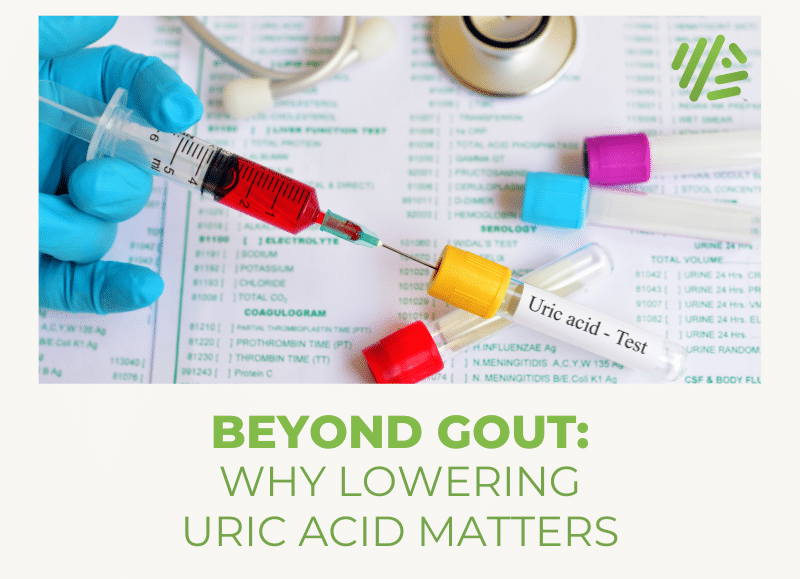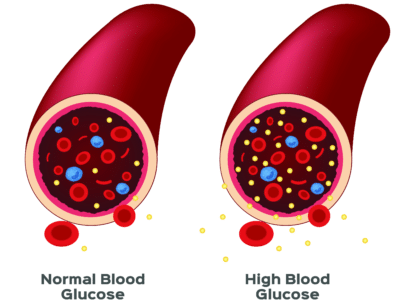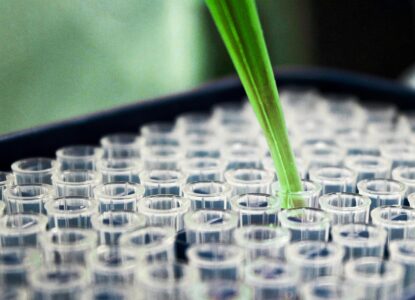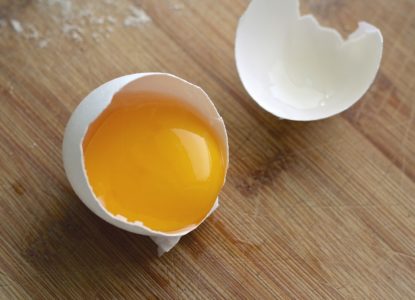Beyond Gout: Why Lowering Uric Acid Matters

Contents
If you’ve arrived at this blog post chances are you’ve already scoured the mountain of identical posts out there that discuss uric acid in the context of gout. But before you go buy the tart cherries and call it a day, give us a few minutes of your attention for a more complete rundown on how best to lower uric acid.
The uric acid story usually goes a lot like this: eating a diet rich in sugar, alcohol and high purine meats and seafood leads to an accumulation in the blood of a waste product called uric acid.
The uric acid forms crystals which accumulate in and irritate joints. The result are painful conditions like gout and arthritis.
And yes, all of this is true. Uric acid is a waste product of purine metabolism, which are essentially microscopic crystal compounds found in food.
However, purines are similar to cholesterol in that we actually make the majority of purine circulating in the body, so they have both “endogenous” and “exogenous” sources. And food isn’t the whole story with uric acid. While different groups like to pin elevated uric acid on different lifestyle factors (usually sugar, alcohol and meat) some people just have a genetic predisposition to higher uric acid levels.
But that’s exactly what I want to focus on first in this post – what constitutes “higher” uric acid and how can we lower uric acid using natural interventions?
Looking at labs like Boston Heart Diagnostics (which provide the ranges we use in our custom nutrition plans), you see uric acid “in the green” if your levels sit anywhere beneath 7 mg/dl. However, a growing chorus of medical professionals agree that a uric acid level of 7 is way too high.
What is a Healthy Uric Acid Level?
Short answer – a healthy uric acid range is less than 6 mg/dl for men and less than 5.5 mg/dl for women. However, many physicians want to see uric acid levels even lower.
A conversation between two well known doctors in the nutrition world, Dr. Peter Attia and Dr. Robert Lustig on Peter Attia’s podcast is instructive. Both men argue that what is considered by most labs to be an acceptable uric acid level is out of touch with what is actually healthy.
Dr. Attia says his patients need to have uric acid below 5.0 mg/dl and that this is “non-negotiable.” Dr. Lustig gives a little more leeway with acceptable uric acid at 5.5 mg/dl or beneath. Both see uric acid as primarily driven by “fructose bio-toxicity,” rather than by eating too much meat.
When you start digging into some of the medical literature you start to see where these guys are coming from.
It seems that the problematic monosodium urate crystals formed by uric acid begin at a level of 6.8 mg/dl in the blood, which is less than ideal for health, but nevertheless listed as in the “green” on many of our most sophisticated labs.1 Monosodium urate crystals are thought to be the type responsible for gout, and are also thought to be bad for heart health.
Hyperuricemia (essentially a precursor state to gout) begins at 7.0 mg/dl for men and 6.0 mg/dl for women. So, you could be just barely on the yellow (beginning of the trouble zone on Boston Heart’s panel) and have hyperuricemia.1
In other words, your lab could be tacitly blessing the beginnings of a major metabolic problem.
Can High Uric Acid be Good?
While it’s likely that the current ranges for uric acid levels have creeped too high, we don’t want zero uric acid either.
Parkinson’s patients typically present with very low uric acid levels, and we do know that, at least at healthy levels, uric acid acts as an antioxidant in the body.2
When on its “best behavior,” uric acid operates as a free radical scavenger and metal chelator.3 So, we do need uric acid circulating in the body, it’s just that for many of us there is too much of a good thing.
When uric acid levels rise to the level of hyperuricemia, it seems to take on a pro-oxidant role, increasing levels of oxidative stress in the heart, kidney and liver.
Health Conditions Associated With Elevated Uric Acid
Gout
The big one to mention right off the bat is gout. Gout is thought to be caused by the formation of uric acid crystals that damage the joints, commonly causing pain in areas like the big toe, elbows and feet (this is where you get the term “gouty arthritis”).
Kidney Stones
Uric acid stones are one of four types of kidney stone. Uric acid driven kidney stones can form when uric acid levels rise to unhealthy levels and urine PH remains too acidic.
Heart Disease
One of the big surprises for me when researching uric acid was the fact that uric acid, when elevated, can play a role in oxidizing LDL particles. The process of oxidized fats binding to LDL is one of the big accelerating risk factors for heart disease.
However, even though the pro-oxidant role of uric acid is now fairly well established, historically there have been conflicting views as far as uric acid and heart disease are concerned. The prevailing view had been that uric acid is a byproduct of other disease states, but it does not cause those states.
That thinking is beginning to change now that we know uric acid is a nitric oxide inhibitor, which is part of the reason high levels of uric acid and high blood pressure often go hand in hand. For an example of the conflict over uric acid and heart health, the Framingham study found an association between serum uric acid and cardiovascular disease in women, but not in men.4 But then different studies came to the exact opposite conclusion for men when looking at the same data set.5
The overall modern trend line seems to agree uric acid is an independent risk factor for heart disease, especially as therapies aimed at lowering uric acid also tend to work in lowering high blood pressure.6
Uric Acid and Left Ventricular Hypertrophy
Left ventricular hypertrophy (LVH) is a thickening of the wall of your heart’s main pumping chamber, which is an early sign of heart disease. Some studies show an association between LVH and elevated uric acid. If you have high uric acid and see plaque in one of the main arteries on the left side of your heart after a calcium score, that could represent the “smoking gun” that clues you in to the role elevated uric acid is playing in progression of heart disease.
For a thorough review, take a look at Uric Acid and Cardiovascular Disease: an update.
Why would lower uric acid mean lower blood pressure?
Hypertension
This is a key point: more uric acid means less nitric oxide.
Uric acid is an inhibitor of nitric oxide synthesis (the creation of nitric oxide via genes like NOS3), which leads to hypertension as the heart needs to pump harder to get blood to the various regions of the body. Nitric oxide is a vasodilator, we need it to relax blood vessels so they can receive blood. At high levels, uric acid disrupts this process.7
Metabolic Syndrome
We can’t say for sure that it’s causative, but metabolic syndrome and high uric acid seem to go hand in hand.8 This may explain the study I discuss later in the post which lowered uric acid using a low glycemic plant forward diet.
How to Lower Uric Acid
Ok, so we now know that even those of us who may have thought we had uric acid under control may have some work to do to bring our numbers into the Attia / Lustig range.
How can we make this happen?
Maintain an Alkaline Urine PH
I wrote about this recently in my blog post on urine PH and alkaline diets. There is good evidence to indicate that we excrete considerably more uric acid in our urine when the PH of our urine is alkaline.
You can measure urine PH with at home test strips.
Avoid Sugar and Alcohol
I lump sugar and alcohol into the same boat here because they are metabolized in similar ways by the liver.
As I mention above, Dr. Lustig and Dr. Attia hammered home the point that high uric acid is, in their view, a “marker of fructose bio-toxicity.”
In the podcast interview, Dr. Lustig explains why fructose increases uric acid. To paraphrase, fructose can only be metabolized by the liver. Every time a fructose molecule enters a liver cell, it has the effect of converting ATP to ADP, and through a complex downstream process driven by fructose enzymes in the body, ADP eventually becomes uric acid on the other end. So, just as uric acid is a waste product of purine metabolism, it is also a waste product of sugar metabolism.
This is why many doctors see uric acid as a proxy for sugar consumption over time.
Limit High Purine Meats and Seafood
Although we make the majority of the purine in our bodies “endogenously,” we still get 1/3 of purine from food, and it’s clear that, in some cases, the addition of high purine food makes a difference on serum uric acid. Which foods are the highest in purine?
- Organ meats
- Beef
- Pork
- Beer and alcohol
- Shellfish
- Seafood
- Duck
I should note here that I have seen the blood work of friends who eat a ton of meat and still maintain a uric acid level of 4.5 mg/dl (although this friend’s CRP is pretty high), so clearly dietary purine isn’t the whole story, but for some people, watching purine and avoiding the worst offenders like beef, pork, organ meats and poultry will offer benefit.
Since the studies are all over the map here (some find higher uric acid with higher protein, others don’t) the only way to know is to test your own numbers on various dietary protocols.
Low Carb Diets for Lowering Uric Acid
To continue with the low purine theme, some would be surprised to learn that grains, especially whole grains like oats, are actually fairly high in purine. Having said that, it’s unlikely that eating whole grains will trigger gout flairs, or be the primary culprit behind higher than normal uric acid.
But then we have this study, which is a rare randomized control trial, unusual for the nutrition world. A group of overweight patients was divided into 4 diet types to see which lowered uric acid. The diet types were as follows:
- high GI (GI ≥65) with high %carb (58% kcal);
- low GI (GI ≤45) with low %carb (40% kcal);
- low GI with high %carb;
- and high GI with low %carb
Of the 4 diets, the one that lowered uric acid the most was the low glycemic index diet that also had a large percent of the calories devoted to carbohydrate. So, in other words, a strict plant based diet with very few refined carbs and I am assuming little in the way of white rice, white potato, etc.
To quote study authors:
In this trial, reducing dietary glycemic index decreased uric acid concentrations, while reducing the proportion of dietary carbohydrate increased uric acid concentrations.
Note that only 5% of participants had elevated uric acid at the study outset, so we could be seeing a group that already does a good job with uric acid metabolism to begin with.
Vitamin C and Uric acid
Although not all studies agree, there is fairly extensive research to indicate that Vitamin C lowers uric acid.
For example, this study which found a 0.5 mg/dl average reduction in uric acid in subjects taking only 500 mg doses of Vitamin C for 2 months versus no change in the placebo group.
Quercetin
Quercetin is a versatile supplement. Known as a mast cell stabilizer and as a nutrient that can ease prostate inflammation as well as lower bad cholesterol, quercetin has also shown promise in lowering uric acid. A double blind, placebo controlled study that appeared in the British Journal of Nutrition found just 500mg a day of quercetin fpr 4 weeks significantly lowered uric acid levels.
Tart Cherries
This is one you see on the internet with regularity and we even listed tart cherry extract as a good supplement for runners with the logic that it seems to reduce inflammation in the body. At first glance, you’d think that the fructose in the cherries would present a problem, especially under the Attia / Lustig thinking on uric acid, and in some cases it might, but there is also evidence of tart cherries being an effective tool in combatting gout attacks. To be clear, the studies don’t show that tart cherries lower uric acid, but they do show that tart cherries seem to be very effective at preventing and lessening the severity of gout flare ups.9
Sodium and Uric Acid
Some studies show a link between sodium in the diet and elevated uric acid.10
Does Coffee Lower Uric Acid?
Again, there is conflicting evidence here. Some sites recommend steering clear of caffeine as a means to avoiding gout flare ups, while others argue that coffee consumption helps lower uric acid. If coffee does act on uric acid, it’s not the caffeine that is driving the benefits. Large scale food frequency questionnaire studies have shown an inverse relationship between coffee consumption and uric acid, but not with tea and uric acid.11
Do Vegans Have Low Uric Acid Levels?
No, vegetarians and pescatarians have the lowest uric acid, not vegans.
If purine was the only factor in the uric acid equation, it would logically follow that Vegans have the lowest levels of uric acid. However, studies show the opposite is true. Vegans often have high uric acid levels, presumably because a Vegan diet is hard to follow without resorting to processed foods and foods with added sugar (which is everywhere).12
If you find the evidence for urine PH and excretion of uric acid compelling, as I do, you could also theorize that “unhealthy Vegans” who rely heavily on refined grains and processed carbs maintain an acidic urine PH which prevents them from excreting optimal amounts of uric acid. I was also interested to find this nutritionfacts.org page on uric acid describing reductions in uric acid after drinking milk and increases in uric acid after eating soy. Quite a concession from a site that is notoriously biased in favor of the plant based movement, but it goes to show that not all plant foods are healthy in every case.
While Paleo blogs have trotted out this “Vegans have high uric acid” study, they often fail to mention that Vegetarians and Pescatarians tend to have the lowest levels of uric acid, perhaps because they have the option of eggs and dairy products, which aren’t terrible in their purine count and are a low sugar option for a staple food.
Key Takeaways for Lowering Uric Acid
- Uric acid levels in the “green” from most labs might not mean much.
- Sugar is to be avoided expect as a very occasional treat.
- Proteins have waste products – use meat as a condiment not a main course.
- I have a new respect for decaf coffee.
- Supplements like Vitamin C have very little downside and may be valuable in keeping uric acid in range.
- Alcohol is fun socially, but it’s not good for you.



